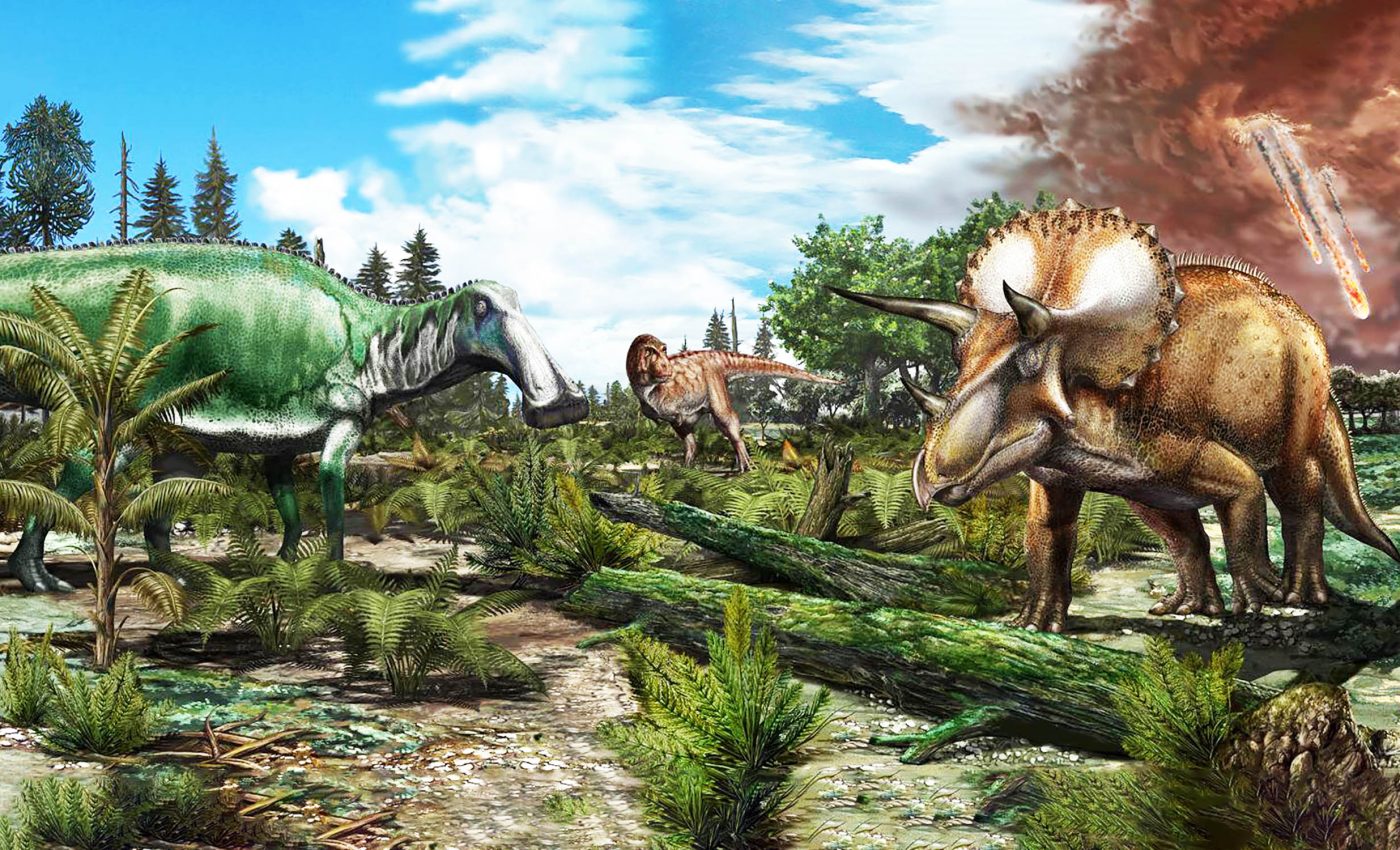
Dinosaur extinction theories are challenged by new research
Dinosaurs might not have been on the verge of extinction before an asteroid wiped them out 66 million years ago.
New research led by scientists at University College London (UCL) challenges the idea that dinosaur species gradually declined. Instead of a real drop in biodiversity, the study suggests that gaps in the fossil record might better explain this lack of specimens.
These findings question a decades-old assumption that dinosaurs were dwindling even before the catastrophic impact that ended the Cretaceous period.
Reexamining dinosaur extinction
The team studied more than 8,000 dinosaur fossils from North America. They focused on the last 18 million years before the asteroid hit. This is a window from 84 to 66 million years ago.
At first glance, the fossils show a steady drop in dinosaur diversity starting about 75 million years ago. The researchers believe this trend is misleading.
“It’s been a subject of debate for more than 30 years,” said lead author Chris Dean from UCL’s Department of Earth Sciences.
“Were dinosaurs doomed and already on their way out before the asteroid hit? We analyzed the fossil record and found that the quality of the record of four groups of dinosaurs gets worse during the final 6 million years prior to the asteroid.”
In other words, the apparent drop in species may not reflect what was really happening before the sudden dinosaur extinction event.
Instead, it may simply be that fossils from that time are harder to locate. Natural geological changes might have reduced where and how fossils could be preserved.
Digging into the data
The researchers studied four major groups of dinosaurs: the Ankylosauridae (club-tailed armored herbivores), Ceratopsidae (like the iconic Triceratops), Hadrosauridae (duck-billed plant eaters), and Tyrannosauridae (apex predators like T. rex).
Using occupancy modeling (a method borrowed from ecology), they mapped where these dinosaurs likely lived across ancient North America.
The experts broke the region into a grid and estimated the number of grid squares each group probably occupied at different points during the last 18 million years of the Cretaceous.
What they found was surprising. While the raw fossil data suggested fewer species, the modeling indicated that the dinosaur habitat range stayed largely consistent.
This means that dinosaurs probably weren’t dying off, but that we are just not finding as many of their fossils.
Fewer rocks, fewer clues
So why is the record so patchy near the end of the Cretaceous? The team argued it mostly comes down to geology.
Before the dinosaur extinction, North America experienced significant changes: sea levels fell, a large inland sea vanished, and mountain ranges rose.
As a result of these geologic shifts, much of the sediment that could have preserved fossils from that time is no longer exposed. It is also buried under vegetation, cities, and other obstacles.
This makes it harder for paleontologists to locate fossils from the period just before the asteroid.
“The probability of finding dinosaur fossils decreases, while the likelihood of dinosaurs having lived in these areas at the time is stable,” Dean said. “This shows we can’t take the fossil record at face value.”
One dinosaur group stood out
Among the four dinosaur groups, Ceratopsians (the horned dinosaurs) bucked the trend. They were more likely to be found in later layers of the fossil record. These animals also occupied more areas.
The researchers suggest this might be because Ceratopsians preferred open plains. The landscape was more widespread after the inland sea disappeared, and it was more likely to preserve fossils.
This ecological preference may have given them an edge in fossil preservation – not necessarily survival.
Dinosaur extinction without an asteroid?
Alessandro Chiarenza, a co-author of the study, said the findings help reframe our understanding of dinosaur extinction.
“If we take the fossil record at face value, we might conclude dinosaurs were already experiencing a decline. But we show that this apparent decline is more likely a result of a reduced sampling window caused by geological changes,” noted Chiarenza.
“Dinosaurs were probably not inevitably doomed to extinction at the end of the Mesozoic. If it weren’t for that asteroid, they might still share this planet with mammals, lizards, and their surviving descendants: birds.”
Thus, the research adds new weight to the idea that the asteroid impact was a cataclysmic fluke. It was not the final blow to an already dying group but the abrupt end to a thriving and diverse reign.
—–
Image credit: Reconstruction of a late Maastrichtian (~66 million years ago) paleoenvironment in North America, where a floodplain is roamed by dinosaurs like Tyrannosaurus rex, Edmontosaurus annectens and Triceratops prorsus. Davide Bonadonna
The study is published in the journal Current Biology.
—–
Like what you read? Subscribe to our newsletter for engaging articles, exclusive content, and the latest updates.
Check us out on EarthSnap, a free app brought to you by Eric Ralls and Earth.com.
—–













